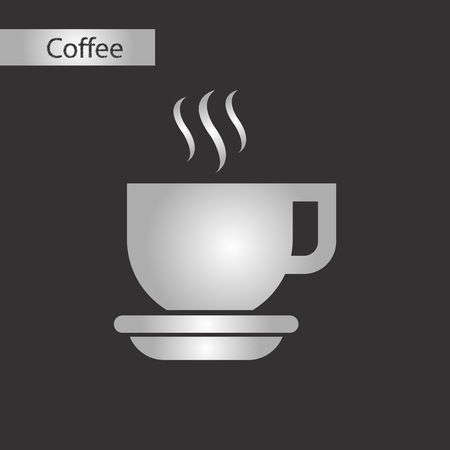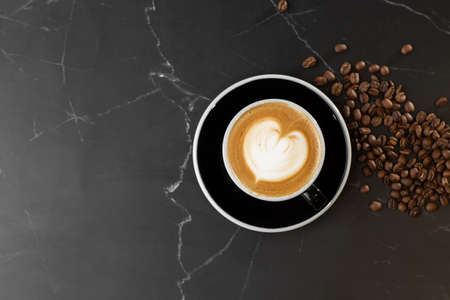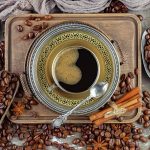1. What Is Pour Over Coffee?
Pour over coffee is a manual brewing method that’s all about control, simplicity, and flavor. Unlike automatic drip machines or single-serve pods, pour over gives you the power to manage every step of the brewing process—from water temperature to pour speed to grind size. This hands-on approach results in a clean, complex cup that highlights the unique characteristics of each coffee bean.
Where Did Pour Over Coffee Come From?
Pour over coffee has its roots in early 20th century Germany when Melitta Bentz invented the paper coffee filter in 1908. Since then, the method has evolved and gained popularity across the globe. In recent years, it has seen a major resurgence in the U.S., especially among specialty coffee enthusiasts who appreciate its artisanal approach.
How Does It Differ from Other Brewing Methods?
The main difference lies in control and clarity. With pour over, youre not just pressing a button—you’re actively involved in crafting your cup. Here’s how it stacks up against other common brewing methods:
| Brewing Method | Main Features | Coffee Profile |
|---|---|---|
| Pour Over | Manual, precise control of water flow and timing | Clean, bright, layered flavors |
| Drip Machine | Automatic, convenient | Milder taste, less nuance |
| French Press | Immersion method with metal filter | Full-bodied, sometimes gritty |
| Espresso | High pressure extraction in seconds | Strong, concentrated shot with crema |
| AeroPress | Hybrid immersion/pressure technique | Smooth and rich with low acidity |
Why Do Americans Love Pour Over Coffee?
Across the U.S., pour over coffee has become a favorite for people who care deeply about quality and flavor. Its especially popular among third-wave coffee shops and home brewers looking for a more personal connection to their daily cup. Many love how pour over allows them to taste subtle notes—like fruitiness or nuttiness—that often get lost in other brewing styles.
The Appeal of Pour Over at Home
You don’t need fancy equipment to get started—just a dripper (like a Hario V60 or Chemex), filters, fresh ground beans, hot water, and a bit of patience. For many, making pour over at home is both a meditative ritual and a way to start the day on a high note.
Quick Benefits Recap:
- Greater control over brewing variables
- Enhanced flavor clarity and complexity
- No need for expensive machines
- A deeper appreciation for specialty beans
- An enjoyable morning routine for many Americans
If you’re ready to take your coffee game to the next level, mastering pour over is an excellent place to start—and this guide will walk you through each step along the way.
2. Essential Gear You’ll Need
If you’re diving into the world of pour over coffee, having the right gear can make all the difference. Fortunately, there are plenty of great options available in the U.S. market that cater to beginners and seasoned coffee lovers alike. Let’s walk through the must-have tools for brewing a great cup at home.
Dripper
The dripper is the heart of your pour over setup. It holds the filter and grounds while allowing water to pass through evenly. There are several popular styles in America:
| Dripper | Material | Popular Brands | Best For |
|---|---|---|---|
| Hario V60 | Ceramic, Plastic, Metal, Glass | Hario | Clean, bright flavor with high control |
| Chemex | Glass (with wood or glass collar) | Chemex | Smooth, balanced brew with fewer oils |
| Kalik Kone / Kalita Wave | Stainless Steel, Ceramic, Glass | Kalita | Even extraction and consistency |
Filters
Your dripper will need matching filters—usually paper or metal. Paper filters are the most common in the U.S., especially for Hario and Chemex users.
- Hario Filters: Cone-shaped, designed specifically for V60.
- Chemex Filters: Thicker paper that removes more oils.
- Kalita Filters: Flat-bottomed filters for even flow.
- Metal Filters: Reusable and eco-friendly but allow more oils into your cup.
Coffee Scale
A digital scale helps you measure both your coffee grounds and water accurately—key to consistent results. Look for one with a built-in timer if possible.
| Brand | Features | Why Its Popular |
|---|---|---|
| Acaia Pearl | Fast response time, app integration, built-in timer | Loved by pros for precision and design |
| TIMEMORE Black Mirror | Sleek design, accurate readings, timer function | A budget-friendly favorite with good performance |
| Etekcity Digital Scale | Simple interface, affordable price point | Great for beginners just getting started |
Kettle (Gooseneck)
A gooseneck kettle gives you precise control over your pour rate and direction—essential for pour over brewing.
- Fellow Stagg EKG: Sleek electric model with temperature control—widely used in American homes and cafés.
- Bonavita Gooseneck Kettle: Reliable and affordable option with variable temp settings.
- Hario Buono Kettle: Classic stovetop style often seen in coffee competitions.
Optional But Helpful Extras:
- Burr Grinder: Freshly ground beans make a huge difference. Look for brands like Baratza or Fellow Opus.
- Pourover Stand: Adds stability and style to your setup—popular in minimalist kitchens.
- Thermometer: Useful if your kettle doesn’t have temperature control (ideal range: 195°F–205°F).
The Bottom Line on Gear Selection:
You don’t need to spend a fortune to get started with pour over coffee. Focus on quality essentials that match your brewing style and preferences. Whether youre shopping on Amazon or at a local Target or specialty shop, theres something out there that fits your budget and needs.
The right tools will help you get consistent results—and once youve dialed them in, youll wonder how you ever drank drip coffee without them!

3. Choosing the Right Coffee Beans
When it comes to pour over coffee, choosing the right beans is just as important as your brewing method. The flavor, aroma, and overall experience of your cup can vary greatly depending on the type of coffee you select. Heres how to find beans that match your taste preferences, with practical tips on roast levels, grind size, and where to buy quality beans in the U.S.
Understanding Roast Levels
Roast level plays a big role in how your pour over coffee tastes. Lighter roasts tend to highlight bright, fruity, and floral notes—perfect for those who enjoy a more vibrant cup. Medium roasts strike a balance between flavor clarity and body, while dark roasts offer bold, deep flavors with chocolatey or smoky undertones.
| Roast Level | Flavor Profile | Best For |
|---|---|---|
| Light Roast | Citrus, floral, tea-like | Pour over drinkers who enjoy bright acidity and origin-specific flavors |
| Medium Roast | Nutty, balanced, mild sweetness | Those looking for a smooth, well-rounded cup |
| Dark Roast | Chocolatey, smoky, bold | Coffee lovers who prefer low acidity and strong flavors |
Selecting the Right Grind Size
For pour over brewing, grind size is key. A medium-coarse grind is usually ideal—it should feel like sea salt between your fingers. Too fine a grind can lead to over-extraction (bitter taste), while too coarse can cause under-extraction (sour or weak flavor).
Quick Grind Size Reference:
- Too Fine: Slows down water flow, makes coffee bitter
- Too Coarse: Speeds up water flow, leads to sour or watery coffee
- Just Right: Medium-coarse like sea salt for balanced extraction
Sourcing Fresh Beans Locally
Your local roasters are one of the best places to get fresh, high-quality coffee beans. Many U.S.-based specialty roasters roast in small batches and label their bags with roast dates so you know youre getting fresh coffee. Visiting local shops also gives you a chance to ask questions and try different origins before committing to a full bag.
Tips for Buying from Local Roasters:
- Look for roast dates—fresh is best (ideally within 2-4 weeks)
- Ask baristas or staff for recommendations based on your flavor preferences
- Try sampler packs if youre new to specialty coffee or want variety
- Support U.S.-based roasters online if local options are limited—many offer nationwide shipping
Selecting the right beans doesn’t have to be complicated. By understanding roast levels, dialing in your grind size, and sourcing fresh beans from reliable U.S. roasters, youll set yourself up for a delicious pour over experience every time.
4. Step-by-Step Brewing Technique
Mastering the pour over process doesnt have to be complicated. With a few simple steps and the right tools, you can create a smooth, flavorful cup of coffee every morning—right from your kitchen. This guide is designed for beginners and breaks down each step to help you build confidence and consistency in your brew.
What You’ll Need
| Item | Description |
|---|---|
| Pour Over Brewer (e.g., Hario V60, Chemex, Kalita Wave) | Your choice of brewer will affect flavor and technique slightly, but all are great for beginners. |
| Paper Filter | Choose the filter that matches your brewer model. |
| Freshly Ground Coffee | Medium grind size, similar to sea salt texture. |
| Kettle (preferably gooseneck) | Helps control water flow for an even extraction. |
| Digital Scale | Essential for measuring coffee and water accurately. |
| Timer | Keeps your brew consistent every time. |
| Mug or Carafe | Your favorite cup or a heat-safe container to catch the brew. |
Step-by-Step Instructions
Step 1: Heat Your Water
Start by heating your water to about 200°F (93°C). If you don’t have a thermometer, bring it to a boil and let it sit for about 30 seconds.
Step 2: Rinse Your Filter
Place the paper filter in your brewer and rinse it with hot water. This removes any paper taste and preheats your brewing device. Discard the rinse water before brewing.
Step 3: Add Coffee Grounds
Add freshly ground coffee into the filter. A good starting ratio is 1 gram of coffee per 16 grams (or ml) of water. For one cup (about 12 oz), use:
| Coffee | Water |
|---|---|
| 22 grams (about 3 tablespoons) | 350 grams (about 12 oz) |
Step 4: Bloom the Coffee
Start your timer and pour just enough hot water (about twice the weight of your coffee) to saturate all the grounds—roughly 44 grams if using 22g of coffee. Let it sit for 30–45 seconds. This allows gases to escape and improves flavor extraction.
Step 5: Pour in Slow Circles
After blooming, begin pouring slowly in a circular motion from the center outward, avoiding the edges. Continue pouring until you reach your total target weight of water (e.g., 350 grams). This should take around 2.5 to 3 minutes total brew time.
Step 6: Let It Drain Completely
Allow all the water to pass through the coffee bed naturally—don’t stir or press. Once dripping stops, remove the brewer and discard the used grounds and filter.
Pro Tips:
- If your brew tastes sour or weak, try grinding finer or increasing brew time slightly.
- If its too bitter or over-extracted, grind coarser or reduce pour time.
- A gooseneck kettle gives better control for even saturation of grounds.
This straightforward method helps you achieve balanced, delicious pour over coffee at home with minimal equipment and effort. Practice makes perfect—and soon this will be your favorite morning ritual.
5. Troubleshooting & Pro Tips
Even seasoned coffee lovers run into issues when making pour over coffee at home. If your brew tastes too bitter, sour, or just “off,” don’t worry—it’s all part of the learning process. Here’s how to fix common mistakes and level up your pour over game with some expert tips.
Common Pour Over Mistakes and How to Fix Them
| Mistake | What’s Going Wrong | Quick Fix |
|---|---|---|
| Water Too Hot | Burns the coffee, leading to bitterness | Use water around 195°F–205°F (90°C–96°C) |
| Grind Too Fine | Over-extraction causes a harsh, bitter taste | Adjust to a medium-coarse grind (like sea salt) |
| Grind Too Coarse | Under-extraction makes coffee taste sour or weak | Try a finer grind for better extraction |
| Poor Blooming Technique | Traps gas in the grounds, affecting flavor | Pre-wet the grounds with a small amount of water for 30–45 seconds before pouring fully |
| Uneven Pouring | Leads to inconsistent extraction—some grounds get overworked while others underdeveloped | Use a gooseneck kettle for more control and pour in slow, circular motions |
Pro Tips to Dial In Your Brew Like a Barista
Tip #1: Use a Scale Every Time
The ratio of coffee to water is key. A good starting point is 1 gram of coffee for every 15–17 grams of water. Using a digital scale helps you stay consistent and avoid guesswork.
Tip #2: Preheat Everything
This includes your dripper, carafe, and mug. Preheating prevents heat loss during brewing, which can affect flavor clarity.
Tip #3: Stir Gently During Blooming
A light stir after the initial bloom pour helps saturate all the grounds evenly and releases trapped gases faster.
Tip #4: Keep an Eye on Brew Time
Total brew time should land between 2.5 to 4 minutes. If it’s way off, adjust your grind size or pouring speed.
Tip #5: Taste and Tweak One Variable at a Time
If something tastes off, don’t change everything at once. Start by adjusting one element—grind size, water temp, or brew time—and take notes. This helps you understand what works best for your beans and setup.
Your Coffee, Your Rules—But Better!
Troubleshooting pour over coffee isn’t about chasing perfection—it’s about making small improvements each time. With these tips and fixes, you’ll be able to fine-tune your technique and enjoy consistently delicious cups at home without any bitterness or sour notes getting in the way.


